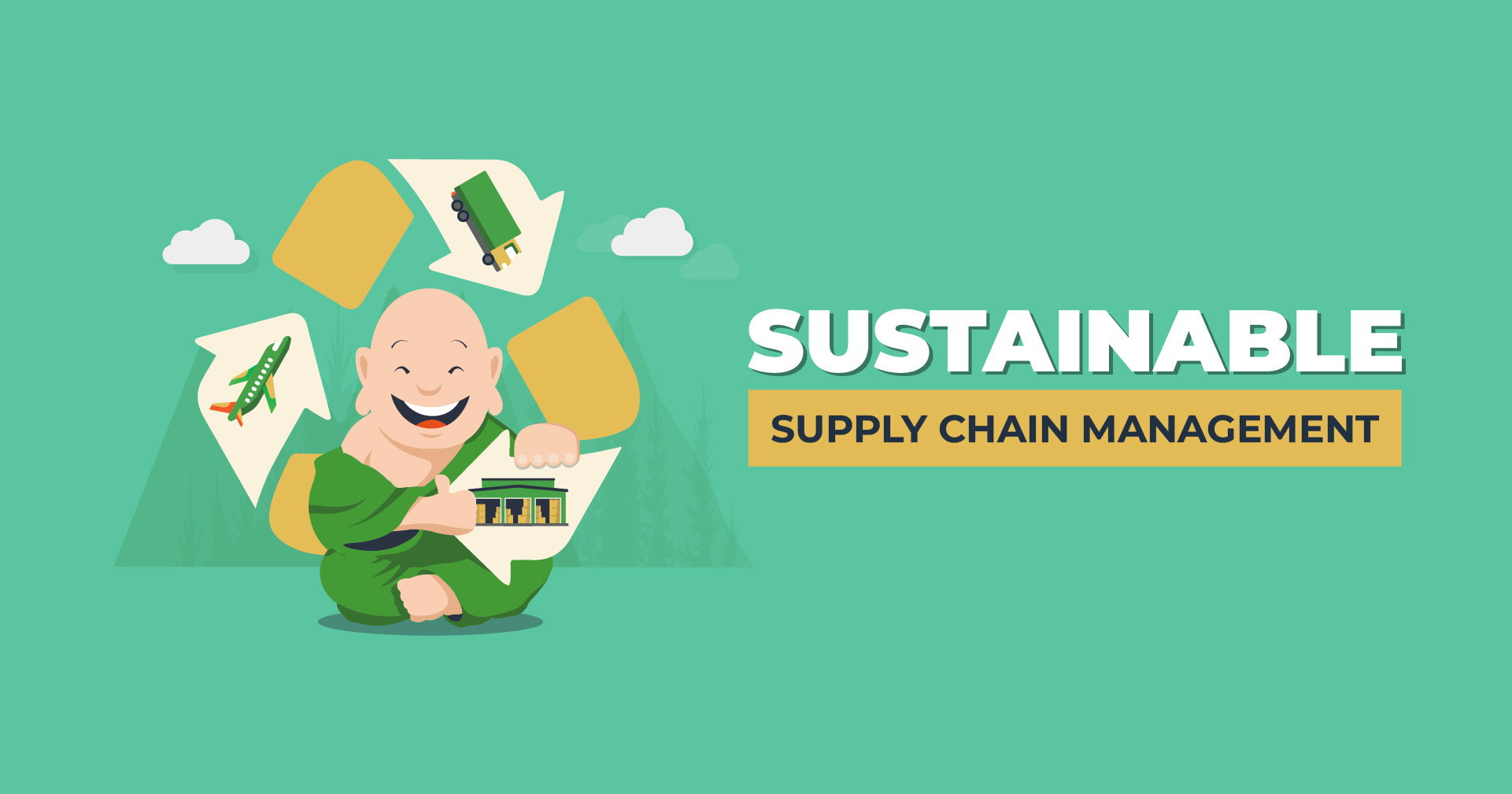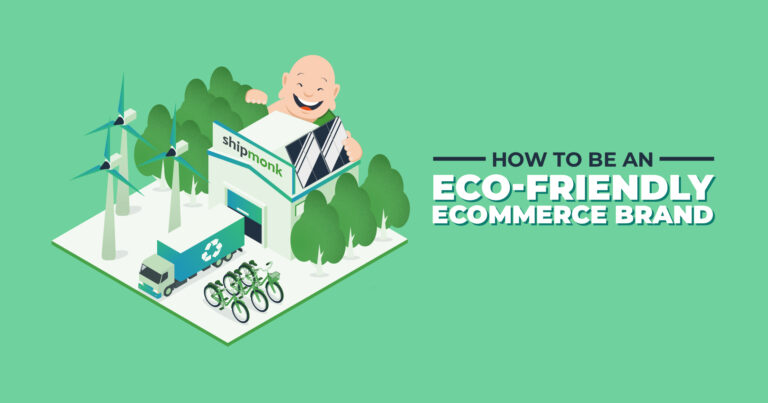Sustainable Supply Chain Management
It seems like “sustainability” is the word du jour nowadays. You may have already looked into investing in solar panels for reduced carbon emissions or keep a metal straw in your purse for when you get sodas to-go. Either way, as we combat climate change, going green is top of mind for businesses and customers alike.
Supply chains have a special relationship with sustainability initiatives because their impact on the environment is so significant. At the same time, “One condition that can slow a company’s growth is poor sustainability performance, as measured in environmental and social impact.” Governments, industry leaders, and consumers alike are calling for improvement in sustainability performance. Failure to adjust can damage a company’s total returns and ability to scale. Fortunately, as an ecommerce business owner, there are solid steps you can take to create or optimize a sustainable supply chain. Keep reading for the greenprint!
The Problem with the Current Supply Chain Situation
Growing up, you’ve probably heard your parents say that money doesn’t grow on trees. And they were right! (Sort of.)
The ecommerce supply chain spans the sourcing, manufacturing, and distribution of products. Along the way, a lot of resources and raw materials are used, which produce greenhouse gasses that trap heat in the atmosphere and accelerate climate change. In turn, climate change negatively impacts the Earth, particularly in terms of weather and depletion of natural resources. As such, since ecommerce businesses aren’t going anywhere, committing to a sustainable supply chain is absolutely necessary for the livelihood of our planet and future generations.
4 Benefits of Sustainable Supply Chain Management
Still not convinced that going green is your ecommerce business’s best option? Here are some wins you won’t want to miss out on.
#1 Earn Brownie Points
Doing good things makes you feel good, plain and simple. In addition to the joys of “doing the right thing,” making a positive impact gives you major kudos with the community and within the ecommerce industry as a whole as you set an example for other ecommerce businesses with your responsible choices.
#2 Upgrade Your Brand
More than ever, customers are concerned about the environmental impact of their purchases. Catering to this shift in priorities will make those good conscious customers happy, which they’ll tell other people about, endorsing your brand with gleaming social proof. This can also potentially differentiate you from competitors who don’t lead with the same sustainability decision-making.
#3 Enhance Efficiency
Believe it or not, efficiency is the name of the game when it comes to sustainable supply chain management. After all, reducing waste early-on so that it doesn’t become waste in a landfill is one of the key tenets of sustainability, and with that comes advancements in overall strategy, technology, and more.
#4 Save Money
While some eco-friendly purchases and investments may be attached to a heftier price tag, don’t mistake long-term profit with short-term loss. Because efficiency is a focal point of sustainable supply chain management, your environmentally-minded switch will pay for itself in the long run.
5 Strategies for Sustainable Supply Chain Management
We know the why, but what about the how? Here are some actionable steps you can take today to get your ecommerce businesses set up with a more sustainable approach to supply chain management.
#1 Assess the Situation
When making any change, it’s important to be objective. Sit down and think about where your ecommerce business is doing great operationally as well as where some improvements could be made. For example, what is your packaging situation? Are you making the most cost and space effective decisions when it comes to transportation methods or floor-loaded vs. palletized shipping? Are you using the best, greenest options for dunnage? Are you minimizing the distance your orders have to travel by distributing product to strategic warehouses or fulfillment centers vs. sticking with in-house fulfillment? These are just a few questions you can ask yourself as you begin to analyze ways to trim the pollutant or landfill fat that may be attached to your business.
#2 Set Your Goals
Where would you like your ecommerce business to be? Having a clear picture of your goals, no matter how fanciful, is a vital foundation for moving forward. It might also be helpful to choose a cause that you’re particularly passionate about. Your ecommerce business doesn’t have to try to save the oceans, the trees, the atmosphere all at the same time. Whether you change your business practices to specifically benefit an area of environmental protection/reform, or donate a portion of profits to it, if you focus and give it your best, that is a much more manageable way of achieving real change.
You can even further that impact by partnering with specific charities that charge your vision or getting customers involved who care about the same things. The important thing is to do research beforehand. As in, educate yourself properly on the factors and influences that affect the areas of the supply chain and environment you are trying to alter. The more you know, right?
#3 Get Your Team on the Same Page
There are no lone wolves in sustainable supply chain management. For your new system to function without a hitch, it’s important for your staff, whether they’re janitors or executives, to be briefed on your company-wide green standards and practices, objectives, and how they’ll be accomplished.
#4 Work with Like-Minded Vendors
While it might take you a few extra beats, whether you’re a DTC or B2B ecommerce business, finding vendors that share your green goals is a must for smooth, sustainable sailing. The good news is that there is a ton of progress in this area, and our industry is full of eco-friendly packaging and shipping options to choose from. You just have to do your due diligence and find the partners that work for your brand and budget.
#5 Be Transparent
You know what they say — honesty is the best policy. Consider signing your customers up for updates and/or asking for their input on your green policies. Nothing is perfect, but your customers will appreciate a business that’s upfront about where things go right and where there’s still room for improvement. You can also test the waters and gauge customer interest in contributing to charitable partners, paying a little more for green packaging, rewarding customers who choose ground or economy shipping over potentially more environmentally-impactful speedy shipping.
Get Your Green On!
And there you have it, a quick guide on sustainable supply chain management for ecommerce businesses. We hope these ideas have inspired you to take the next step in your green journey. For more detailed information on green partners who are notably working to improve ecommerce’s effect on the environment, check out our in-depth eco-friendly ideas blog now! And if you’re ready to collaborate with a 3PL that cares about all your ecommerce business goals and will implement whatever customizable packaging, shipping, etc. that meets those needs, contact ShipMonk today.



